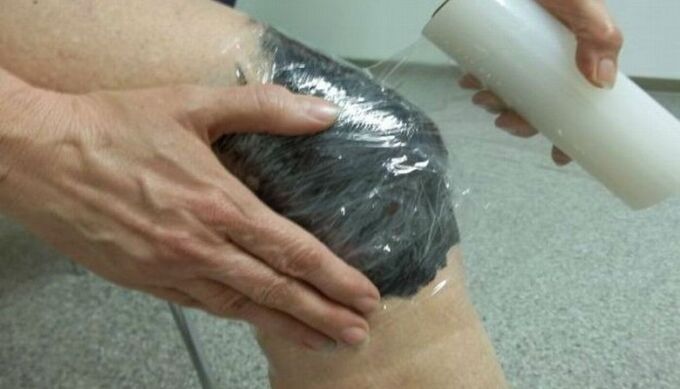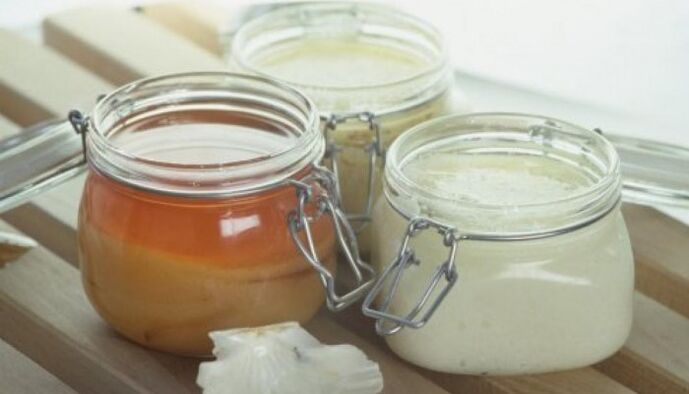Currently, more and more people are trying to treat chronic degenerative-dystrophic joint pathologies (osteoarthrosis, arthrosis, spondylarthrosis, polyosteoarthrosis, etc. ) at home using traditional medicine. However, as clinical practice has shown, it is not worth switching to non-traditional treatments alone.
They can be used quite successfully as a supplement to the basic therapy course, but only after prior consultation with your doctor. What methods can be used at home to treat arthrosis of different localizations:
ethnology
How to treat arthrosis with folk remedies? Patients with degenerative dystrophic joint disease often apply compresses, apply ointment to arthrosis, apply tinctures to affected areas, bathe, drink decoctions, and so on. :
- The use of any alternative treatment should be agreed with your doctor first. If you do not want to harm your health, do not ignore the opinion of a professional.
- Many traditional medicine prescriptions are well known to doctors. They can easily tell you which one will be best for you.
- When making ointments, tinctures (cinquefoil tincture), decoctions and rubs, use only high-quality ingredients that can be purchased at pharmacies or specialty stores today. Do not buy ready-made medicines from folk remedies.
- Read the composition of the medicine carefully. You must not have an allergic reaction or hypersensitivity to any of the ingredients.
- If side effects occur, stop taking the medicine immediately and seek medical attention.
The use of traditional medicine in arthrosis is best combined with traditional treatment methods.
Compresses

In the evening, in almost all patients with arthrosis, the affected joints swell and the painful feelings intensify. Compressions help cope with the unpleasant clinical manifestations of chronic rheumatic pathology. Among all the recipes, we list the most common:
- Clay compress. The clay and water are mixed until a homogeneous mass is obtained. Then apply on a cheese cloth or thin natural cloth. The compress should be placed on the inflamed joint. The duration of the procedure is 60-90 minutes. The compress can be repeated every day for a week.
- Cabbage and honey based compaction. It is considered one of the most popular recipes in traditional medicine because it does not require much effort to prepare and use. Take some fresh cabbage leaves before going to bed. Lubricate one side of the leaf with honey and apply to the affected joint. To wrap the entire joint, we need about 3-4 cabbage leaves, smeared with honey beforehand. To increase efficiency, the joint is also wrapped in polyethylene and wool fabric. As a general rule, the compress is worn all night. There is no particular limitation on the length of the proceedings.
- Oatmeal compress. Boil five tablespoons of oatmeal for 7-8 minutes. To get a viscous porridge, you need to drink less water than for regular cooking. After cooking, the porridge should cool down. It is then spread on a dense cloth, wrapped and applied to the joint. As with the previous recipe, you can wrap the top with polyethylene and a woolen cloth (such as a scarf) to increase efficiency.
- Kefir compress. Grind the eggshell thoroughly into a fine powder. Kefir is added and the mixture is stirred. It is then wrapped in plain cloth. Apply to the affected joint. Wrap from above with polyethylene and a wool scarf.
- Compression of chalk and dairy products. Sometimes chalk is used instead of the shell. They usually use a kind of chalk that is used in school. Building chalk is not suitable because it can irritate the skin. Dilute the powdered mixture with any dairy product such as kefir, sour cream or yogurt. The mixture should be homogeneous but fairly dense. Apply to the joint while wrapping the top with plastic wrap. They usually do compresses at night.
- Horseradish compress. Chop the horseradish roots. Put on low heat, but try not to boil the water. Spread the steamed horseradish on a linen cloth. It is then applied to the affected joint. The duration of the procedure is 2-3 hours.
- Significant relief comes from the use of fresh fern leaves. From the top, the joint can be wrapped in gauze or plastic wrap.
Many patients use ordinary vacuum flasks as a folk cure for arthrosis, which often has a positive effect.
Ointments

In most cases, traditional methods of treating rheumatic pathology include the use of various medicinal ointments, creams, and gels as topical therapies. Traditional medicine also uses drugs in the form of ointments. They are usually made using natural herbs. Here is an example of several recipes that can be used to treat arthrosis at home:
- Complex ointment. They consume three types of herbs, about 10 grams each: sweet clover, hops, and St. John’s wort. All these herbs are mixed in 50 grams of Vaseline. The ointment is homogeneous. The affected joints should be lubricated no more than three times a day for 10 days.
- An external agent based on celandine. Chop the leaves and stems of celandine. We will need 3 tablespoons of this herb, which we put in a small pot and add a glass of sunflower oil. It must be adhered to for at least 2 weeks. After this period, the solution should be filtered. The external agent thus obtained can be applied to the affected area daily by massaging movements. The duration of the therapeutic course is about 25-30 days.
- Ointment from the veil. Grind 20 grams of Caucasian sieve. Then add a tablespoon of vegetable oil, honey and mustard powder. The resulting mixture was heated in a water bath and poured into a small container. Patients believe that the ointment is quite effective in the pain of small joints in the arms and legs.
- Hop cone based external agent. The hop cone and medical Vaseline are mixed in a ratio of 1: 4. It is recommended to use it 3 times a day for 1-2 weeks.
Treatment of arthrosis with folk remedies at home cannot completely get rid of the disease, but it is entirely possible to reduce clinical symptoms such as pain, swelling, and inflammation.
Devices for rubbing joints
Various folk remedies for rubbing are widely used in both inflammatory and degenerative-dystrophic diseases of the joints. To this day, these recipes have represented quite a bit. Stay the most efficient:
- Dandelion tincture. You need to get a small container made of opaque glass. About half of the glass is full of dandelion heads. We then pour vodka into it. For the prescription to be effective, the liquid must be infused for at least 30 days. After the required time, filter the contents of the bottle. Rub the affected joints with the resulting dandelion tincture before going to bed.
- Infusion of angelica. To make the infusion, you will need a tablespoon of angelica herb poured into a glass of hot water. Allow the liquid to act for 20 minutes. It should then be filtered and the infusion used to rub the affected joints. Multitude of use - 3 times a day for 2 weeks.
- Zoster tincture. You will need 5 tablespoons of herbs and half a liter of vodka to make sea buckthorn tincture. Insist for 10-12 days. At the end of the time, the liquid should be filtered. Apply joster tincture to rub the joints twice a week for a week.
- Complex rubbing. Take honey, glycerin, iodine solution and alcohol in equal parts. If you do not have alcohol, you can buy vodka or natural fruit vinegar. Mix these ingredients thoroughly and let stand for two hours. This rubbing is very effective in relieving pain.
- Medicine collection for rubbing. In a tablespoon we take the following plant species: eucalyptus, needles, hyssop and chamomile. Fill the medicine collection with vegetable oil. Sometimes corn or olive oil is also used. We recommend that you insist for about a day. Apply this rub twice a day. It can also be used as a lubricant for massage.
- Propolis based rubbing. A small amount of propolis should be melted (about 70-100 grams). Add sunflower oil. Then cool the mixture and rub in the affected joint area when pain occurs.
It is not recommended to treat arthrosis at home with various folk remedies without the approval of your doctor.
Therapeutic baths

Balneotherapy is almost always prescribed to treat most degenerative-dystrophic diseases of the musculoskeletal system. It should be noted that this method of therapy is also widely used in folk medicine. Some popular recipes to help with arthrosis:
- Mustard bath. We will need about 150 grams of mustard powder, which must be diluted in 2-3 liters of warm water. When diluting mustard powder, the main care must be taken not to leave lumps. Pour the resulting mixture into a standard bath that you want to take. The duration of the procedure is 15-20 minutes. After a therapeutic bath, the remnants of the mustard mixture are washed in the shower, warm pajamas are put on, and we lie down under the blanket.
- Bath with mint. Dry mint grass collected during the flowering period is used to prepare the bath. Pour the mint into a small pan or an iron bucket and pour 1: 3 water. The solution is then boiled for 20 minutes. It also sticks to it for about half an hour after boiling. Then pour the mint solution into the bath. The duration of the bath is determined individually. It is necessary for the body to evaporate. Then dry and put on warm clothes.
- Spa. Take three tablespoons of St. John’s wort, oregano, marigold, nettle and burdock root. Separately stick in a small container of hot water for an hour. Then pour the herbal infusion into the bath. The bathing procedure should not exceed 20 minutes.
Urgent request - if you decide to supplement your traditional treatment for arthrosis with a variety of traditional remedies, first consult your doctor, who will help you choose the most optimal medications and methods of administration.

















































